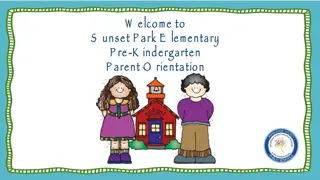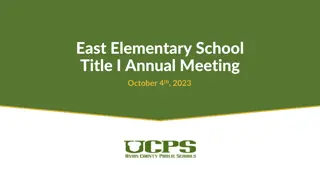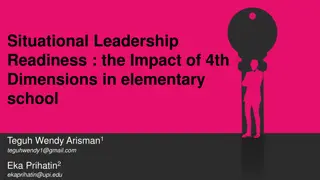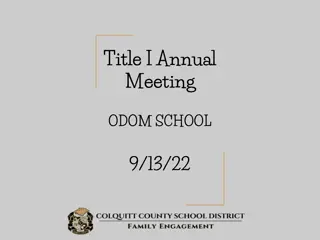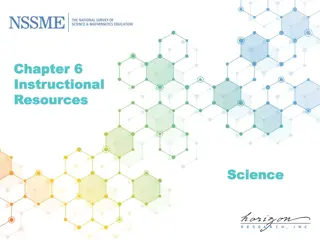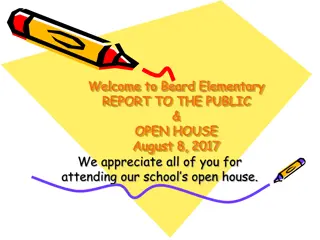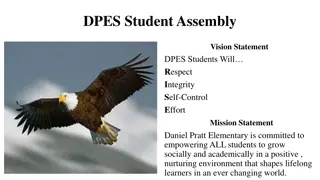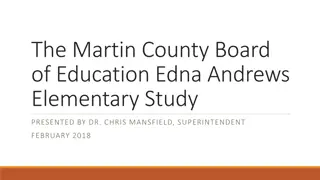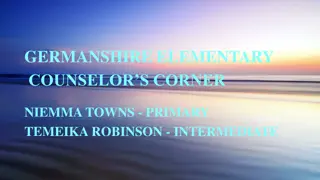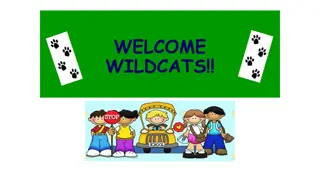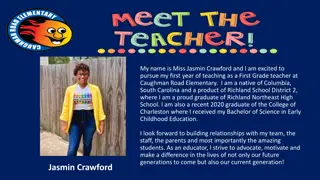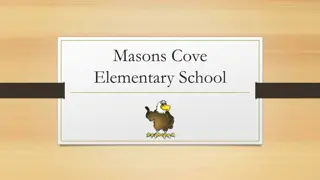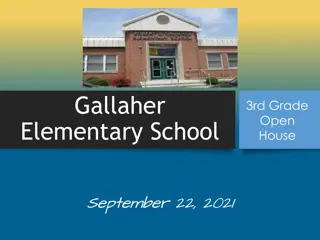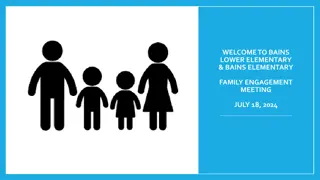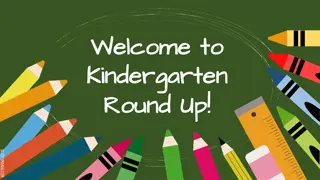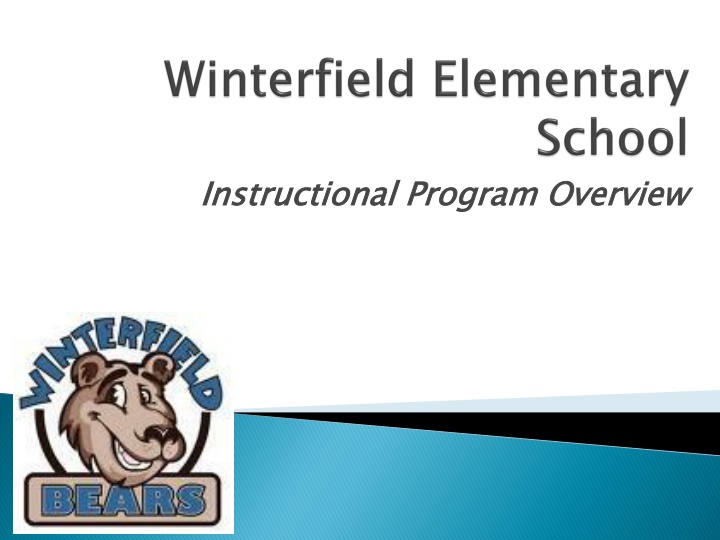
Empowering Teachers and Students Through Rigorous Instruction and Collaboration
Explore the world of instructional program overviews and discover the importance of increasing rigor in teaching. Learn how teachers can collaborate to design challenging assignments and assessments, creating supportive classroom cultures. Gain insights on guiding student thinking and the valuable profession of teaching in this enlightening journey towards academic excellence.
Download Presentation

Please find below an Image/Link to download the presentation.
The content on the website is provided AS IS for your information and personal use only. It may not be sold, licensed, or shared on other websites without obtaining consent from the author. If you encounter any issues during the download, it is possible that the publisher has removed the file from their server.
You are allowed to download the files provided on this website for personal or commercial use, subject to the condition that they are used lawfully. All files are the property of their respective owners.
The content on the website is provided AS IS for your information and personal use only. It may not be sold, licensed, or shared on other websites without obtaining consent from the author.
E N D
Presentation Transcript
Instructional Program Overview Instructional Program Overview
At the end of the session, teachers will: Understand the urgency of increasing the level of rigor/challenge in our school. Collaborate with administration and colleagues to design rigorous instruction, assignments, and assessments while providing support for one another and our students. Create classroom cultures that support and nurture high academic achievement for all learners.
Become and remain open to new ideas Be fully engaged and present Honor time agreements Speak your truth respectfully Share responsibility for the success of our work together Silence/vibrate all technology
Guiding student thinking in deliberate ways along a structured route engineered for thinking and learning. Causing mental acts within students heads that will result in their understanding or being able to do something. It s about the learning, not the teaching! Source: Source: The Skillful Teacher (Sapier, Haley-Spec, Glower)
Teaching is a valuable profession with clear standards and expectations. Teaching is a craft that must be constantly be reassessed, revised and refined. Teaching is the most important part of maintaining our civilization. Teaching is an art. Teaching is a science. Teachers can get better if they are honest with themselves and willing to grow.
http://www.thestar.com/content/dam/thestar/opinion/editorials/star_s_view_/2011/10/12/an_apple_a_day_not_such_a_good_idea/apple.jpeghttp://www.thestar.com/content/dam/thestar/opinion/editorials/star_s_view_/2011/10/12/an_apple_a_day_not_such_a_good_idea/apple.jpeg
EVERY child and EVERY teacher can learn, grow, and excel in the right environment. Everyone is important: Every child deserves an EXPERT teacher Every teacher deserves to be a part of an EXPERT community. Every school needs adults who can pool their intelligence to help the entire school get smarter. Working in a high poverty school is hard work, but coming to work should be a joy EVERYDAY. Teachers should freely participate in professional development, welcome feedback, and work hard to increase their effectiveness. A family atmosphere is the best way to nurture teachers and grow students.
Ms. Grants Beliefs About Teaching & Learning Every child can learn at HIGH levels. No excuses Maintain a growth mindset Don t blame the lettuce
Ms. Grants Beliefs About Teaching & Learning Push them, scaffold when necessary Great teaching is intentional, not accidental You have to plan it and plan it well! The most important thing is the teacher and what he/she can do Think Different
Agree/Disagree A. Your intelligence is something very basic about you that you can t change very much. B. You can learn new things, but you can t really change how intelligent you are. C. No matter how much intelligence you have, you can always change it quite a bit. D. You can always substantially change how intelligent you are. Agree/Disagree
Intelligence is malleable You can get smarter Effort is primary Failure=opportunity to learn from mistakes Goal-to learn and improve Feedback is help Intelligence is fixed You get what you get Ability is primary Failure=confirmation of lack of ability/smartness Goal: Prove I am smart or hide the truth Feedback is criticism Fixed Mindset Growth Mindset
Agree/Disagree A. Your ________ ability is something very basic about you that you can t change very much. B. You can learn new things, but you can t really change how well you _______. C. No matter how much ________ ability you have, you can always change it quite a bit. D. You can always substantially change how well you _________. Agree/Disagree
This is important You can do it, with effective effort I won t give up on you
When you plan lettuce, if it does not grow well, You don t blame the lettuce. You look for reasons it is not doing well. It may need fertilizer, or more water, or less sun. You never blame the lettuce. --Thich Nhat Hahn
Praise effective effort, not smartness Emphasize the use of skills instead of traits Graph student effort/effort rubrics Explicitly teach resiliency and efficacy
Break Time!
Post every subject, every day. Verbally state prior to beginning instruction. Refer back several times during the instructional period. Align teaching point and/or objective. Post and share share teaching points/objectives for Verbally state teaching points and/or objectives Refer back to the teaching point and/or objectives Align all instructional activities directly to the
Deliver Framing the big picture Using clear explanatory devices Creating mental engagement Providing cognitive empathy and Anchoring learning. Deliver effective instruction effective instruction by:
Communicate the teaching point/objective. Share the learning itinerary-post the agenda on the board. Connect the teaching point/objective to an essential question. Explain the reason for the learning task/activity. How is it connected to the teaching point/objective? Share why the teaching point/objective is important for students to learn (Attention) Share the criteria for success.
Teaching point/Objectives Agenda Learning Task
Mathematicians, today I am going to teach you First we will Then Then Finally After today s teaching, you should have/understand The reason this is important The activities we will do today are important Here is what you need to do to show you have met the standard
Teachers, today I am going to teach you how to frame a lesson. First I will share the knowledge base for framing a lesson. Then we will practice converting CC objectives into a teaching point. Then you will share your learning with a table buddy. Finally we will discuss next steps for successfully implementing our new learning into our daily lessons. After today s training, you should have/understand how framing a lesson can increase student attention and ultimately their engagement. The reason lesson framing is important is that our students need a clear focus free of information that can decrease their opportunities to learn. The activities we will do today are important so you get comfortable with framing. Here is what you need to do to show you have understand how to frame a lesson. Practice framing a lesson with a table buddy and include all important parts of lesson framing in your presentation.
Think of a routine or procedure that you will teach on the 1st day of school. Write a frame of the lesson. Share your frame with a colleague.
Mathematicians, today I am going to teach you First we will Then Then Finally After today s teaching, you should have/understand The reason this is important The activities we will do today are important Here is what you need to do to show you have met the standard
Explanatory devices are tools that can be used to present information and explain concepts within any approach to teaching. Learners take in information in 3 Ways: Auditory Visually Kinesthetically Be sure to explain in ways that allow students to SEE, HEAR, and EXPERIENCE the content or concept.
Simple and progressive cues Simple language Analogies Diagrams Pictures Charts, Whiteboard, Smartboard Document cameras Audio and Video Models Mental Imagery Think Alouds Graphic Organizers
Content + How We Explain it (Explanatory Device) This is the GUM!
Make cues explicit thinking? or guess why we are doing this? Ask clear questions What is good writing? Avoid questions in a series if you are trying to clarify your original question. Ask a clear question. Give necessary steps in directions Oops I left that out Give the meaning of references is she talking about . Make cues explicit, instead of guess what I am Ask clear questions, instead of read my mind Give necessary steps in directions, instead of Give the meaning of references, instead of who
Checking for Understanding Unscrambling Confusions Making Thinking Visible
Summarizing Learning What did I learn today? What puzzled me? What did I enjoy, hate, accomplish in class today? How did I learn from the discussion or lesson? How was my performance in class? Use of Questioning Summarizing Learning Use of Questioning
Frame the lesson Explain clearly Create, maintain and sustain engagement Get in their Heads/Ensure they learning Anchor it so it sticks!
Provide instructional tasks. Visual Oral/Verbal Have a student share Write your directions in advance to ensure you use precise, explicit language Provide clear and concise directions for
Pre necessary for understanding. ExCELL Strategies What academic words are important to understanding? Pre- -teach teach and reinforce reinforce academic vocabulary
Share products before learning tasks are distributed. What is the target? What performance level is expected for mastery? What is the rubric? What does success look like? Can you share example work? Is it posted? Are your expectations clear? Share and review review criteria for scholar work
Use strategically to guide scholars to deeper understanding AND require all scholars to provide evidence (oral and written) to support their thinking. Pre-plan your questions to ensure higher level thinking and necessary scaffolding. How do I cue? How do I prompt? Use questions, prompts, and cues
Assess each lesson AND use scholar performance data to plan upcoming instruction. How will you pre-assess? Exit tickets? End of lesson assessment tied to the objective? Can you prove they met the target? Respond to performance. Assess scholar understanding at the end of
The Big 7 will be the focus of our school wide professional learning this year. The Big 7 are not tied to any particular instructional program or product; it is just about good old-fashioned teaching. The Big 7 will be the focus of our school- - wide professional learning this year.
To ensure all scholars are able to master required content, teachers are expected incorporate the following instructional strategies into their repertoire. Training and support will be provided in these areas throughout the year. expected to
Break Time!
Each grade level will receive a WES Curriculum Map that outlines what to teach when! Includes a year-long outline of units A monthly pacing calendar that can be adjusted by teacher teams. Will support the special area team
We teach Reading Writing Spelling Math Science Social Studies Special Areas
We have designed a master schedule around the needs of our students. 60 Min. of Readers Workshop (inc. SS) 60 Min. of Math 45 Min. of Writers Workshop 45 Min. of Science 30 Min. of Reading Support 30 Min. of Math Support 55 Min. of Special Area classes (5 Day Rotation)
Actors do not teach children, teachers do Programs do not teach children, teachers do Technology does not teach children, teachers do Worksheets do not teach children, teachers do Video clips do not teach children, teachers do
Every child was scheduled by hand Organizing levels of teacher support based upon students needs: ESL Services EC Services Facilitator Co-teaching, demonstration and modeling. Potential hiring of additional co-teachers
Reading Support Leveled Literacy Intervention Guided Reading Book Clubs Math Support Time Tech Swap (ixl.com and Dreambox) Guided Math Support
We have ordered an additional 90 Chrome Books! Every 3rd-5th grade classroom will have 10 Chrome Books assigned all day, every day. Personalized learning and support We plan to order more iPads! Every K-2nd grade classrooms will ultimately have an assigned 10 iPads to support personalized learning and support.

